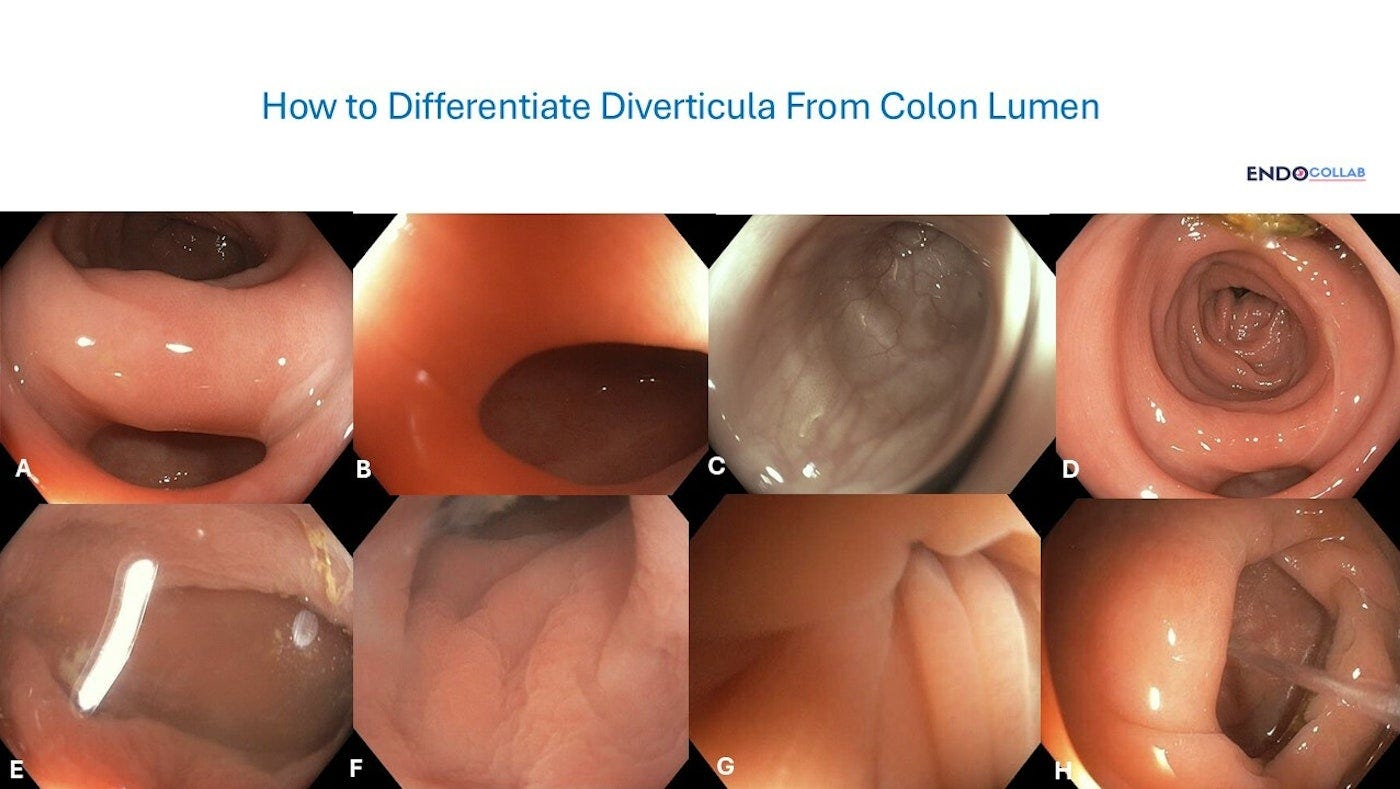How to differentiate Diverticula from Colon Lumen
Intro
Welcome to this week's clinical digest from EndoCollab. Accurately differentiating diverticula from normal colon lumen during colonoscopy is a fundamental skill that can prevent missed pathology and unnecessary interventions—yet it remains a common source of confusion for both trainees and experienced endoscopists. This week, we're breaking down the visual cues, technical approaches, and decision-making frameworks that separate confident diagnosis from diagnostic uncertainty. Free readers get our weekly highlights and key clinical pearls, while paid members unlock our complete case archive, exclusive demonstration videos, comment discussions, comprehensive video courses, and access to our founding members' WhatsApp group for real-time case consultations. Ready for the deeper dive? Upgrade and join us.
Occasionally colon diverticula may be confused with colon lumen. Insertion of the scope into a diverticulum may result in perforation. Clues for diverticula are: a) rounded borders, b) fuzzy mucosa close to scope (with normal mucosa distally) (panel B), fibrotic-like rings in the lumen (panel C). Using lots of water assists in increasing the colon lumen diameter (E to H)r, opens the lumen, and allows for smooth navigation of scope. The presence of convergent folds or folds going towards the orifice suggests colon lumen (panel F and panel G). Always take your time, pull pack, do not push scope forward if feeling unsure.
Join the Members-Only Discussion
How do you approach challenging cases where diverticular openings mimic luminal anatomy, especially in tortuous sigmoid segments? What's your go-to technique when standard visualization fails—do you rely on insufflation changes, scope positioning, or specific endoscopic maneuvers? We'd love to hear about your most difficult diverticular cases and the protocols that have served you best in distinguishing true pathology from normal anatomical variants. Share your insights on endoscopic differentiation techniques and any pearls you've developed over the years. See you in the comments!


